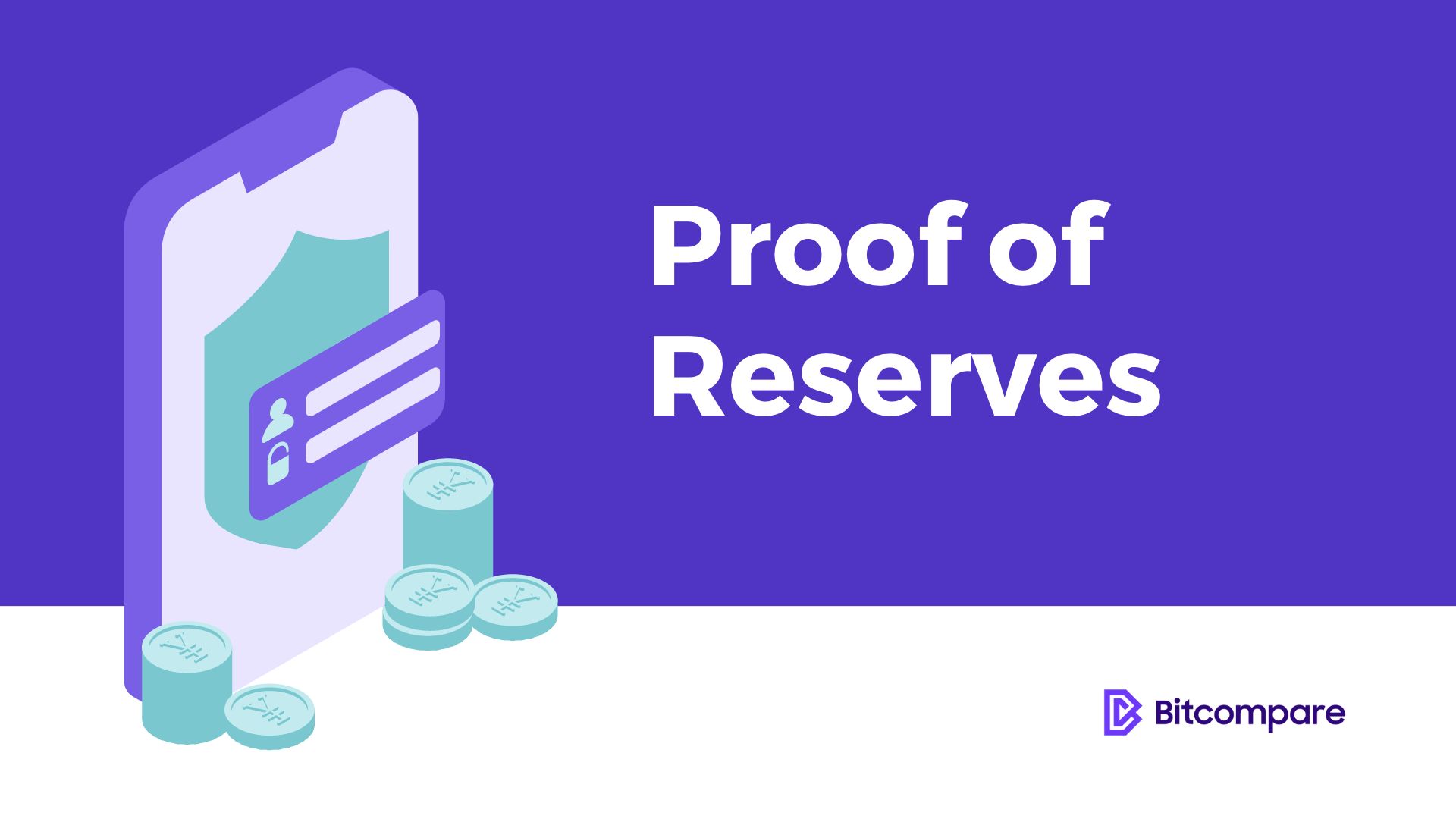- Kraken. (Auditor-assisted, Merkle tree user validation, point in time) (updated semi-annually) (11/2022)
- Binance. (Self-assessment, Merkle tree user validation) (11/2022)
- Bitfinex. (Self-assessment, Merkle tree user validation) (11/2022)
- Nexo. (Auditor-assisted) (updated daily) (12/2022)
- Circle. (Auditor-assisted) (updated monthly) (10/2022)
- Gate.io. (Auditor-assisted, Merkle tree user validation) (10/2022)
- Ledn. (Auditor-assisted, Merkle tree user validation) (updated every six months) (6/2022)
- OKX. (Self-assessment, Merkle tree user validation) (11/2022)
Informal Proof of Reserves
- KuCoin (Nansen)
- Huobi (Nansen)
- Crypto.com (Nansen)
- Deribit (Nansen)
Stablecoin Issuers Proof of Reserves
- Circle. (Auditor-assisted, monthly attestations)
- Tether. (Auditor-assisted, daily attestations)
- TrustToken. (Auditor-assisted, real-time attestations)
- Paxos. (Auditor assisted, monthly attestations)
What You Need to Know About Proof of Reserves (PoR)
So, what is Proof of Reserves, and why should you care whether a crypto platform has it?
Proof of Reserve (PoR) is a concept designed to ensure crypto platforms remain secure, transparent, and accountable to customers. It involves thoroughly auditing a platform to ensure it has the required reserves.
Crypto platforms back their assets with a 1:1 ratio. The crypto platform’s assets should match user balances. If the user balances are $10,000,000, the platform should have reserves of the same amount or more. Having full reserves ensures transparency and assures clients that their assets are always available for withdrawal.
How Does the Proof of Reserves Process Work?
Proof of Reserves is done using a unique data structure called a Merkle tree. This method helps an auditor summarize a platform's transactions and view its held assets. The auditor then checks whether the held amount matches the user balances. A Merkle tree also encrypts blockchain transaction data and shows the consistency of transactions.
A Proof of Reserves done using a Merkle tree approach allows users to check whether their balance was included in the audit. Also, the auditor can use the Merkle root to confirm the accuracy of a platform’s data. A Merkle root is a method used to verify whether a data block is whole, altered, or damaged. Therefore, an auditor can tell when a crypto platform changes transaction data to pass the audit.
A PoR is mostly done by a third-party auditor to ensure transparency. However, some crypto platforms do their Proof of Reserves independently, then release an attestation report.
FAQ
Why Is Proof of Reserves Important?
Proof of Reserves verifies whether a platform has enough backed assets to ensure stability and transparency. It also helps platforms gain the trust of their users and potential investors as it proves investments are fully reserved and stored safely. Moreover, it enables customers to confirm a platform's reliability and trustworthiness before investing.
Proof of Reserves also allows the government to ensure crypto platforms strictly follow the regulations and don’t risk customer funds.
How Should Crypto Companies Go About Proof of Reserves?
A crypto platform can do a Proof of Reserves independently or hire an auditor. Crypto platforms should consider using an auditor-based approach. This is because it’s more accurate and gives formal attestation reports to issue to investors. It also lets investors verify whether their held crypto assets were included in the PoR. This enables customers to trust that the platform did a proper Proof of Reserves.
An auditor-assisted approach also helps a platform show it doesn’t mix its operating capital with customer funds.
A crypto platform should also consider mentioning other precautions taken to ensure full reserves and investment safety.
Does a Proof of Reserves Have Any Drawbacks?
A Proof of Reserves is highly beneficial but has some downsides too. For instance, it only shows the available on-chain funds. But it does not prove the possession of every private crypto key or identify duplicated keys.
Also, a crypto exchange could borrow crypto assets before the audit to help pass the check. Doing so would help a platform with fractional reserves create an illusion of full reserves and investment safety. However, top crypto auditors may notice such tricks. This is why checking whether a platform uses a competent auditor is crucial.
Which Crypto Exchanges Have Proof of Reserves?
Binance and Coinbase are among the top crypto exchanges with Proof of Reserves. Coinmarketcap lists crypto platforms with Proof of Reserves. You can check out the list to see if your favorite platform appears. The listed platforms would be your best bet for investing or storing crypto assets.
Nansen also allows you to check the reserves of different crypto platforms. The data is updated daily, but don’t take it as official proof of reserves.
How to Verify Whether Your Assets Were Included In a Proof of Reserves
Some crypto exchanges allow you to check if your assets were included in their Merkle tree audit. They use a validator tool that verifies if your crypto balance was captured in the Merkle tree snapshot. OKX is one of the exchanges that let you do so. Therefore, check whether your crypto platform offers that option, and follow the required steps to verify this fact.
Disclaimer
The above information is for educational purposes only. The information is based on third-party, public data, meaning we can’t bet on its accuracy. Do not take it as investment advice to engage with any of the mentioned crypto platforms. We are not responsible for verifying the accuracy and integrity of the provided information. We recommend researching further about a platform before investing.
Proof of Reserve Resources
- How to Stop the Next Quadriga: Make Exchanges Prove Their Reserves
- Proof-of-Reserves Concept Gains Traction as Major Crypto Exchanges Provide Wallet Lists and Promise Full Audits
- Crypto Exchanges Scramble to Compile 'Proof of Reserves' as FTX Contagion Grips Markets
- Proof of Reserves: These Exchanges Are Adhering to the New Standard
- Fixing The Privacy Gap In Proof Of Liability Protocols
- CoinMarketCap launches proof-of-reserve tracker for crypto exchanges
- Kraken Proof of Reserves
- What Are Proof of Reserves Audits
- OKX Proof of Reserves
- Chainlink Proof of Reserve: Autonomous, reliable, and secure










